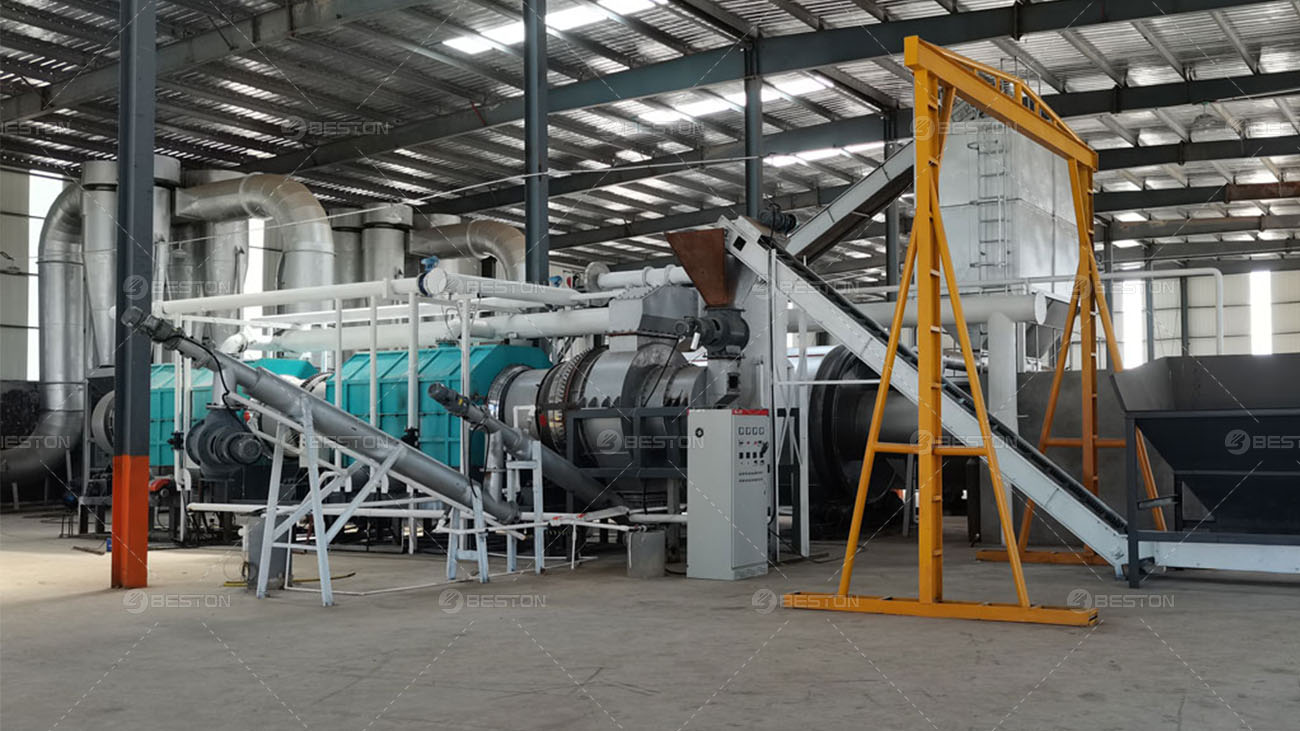Biochar, a charcoal-like substance derived from the thermochemical conversion of biomass, has emerged as a promising tool for sustainable waste management, soil enhancement, and carbon sequestration. Optimizing biochar production efficiency is crucial for maximizing its environmental and economic benefits. This article explores various strategies to enhance biochar yield, quality, and process economics throughout the production chain.
Feedstock Selection and Pretreatment
The type of biomass feedstock significantly impacts biochar properties and production efficiency. Lignocellulosic materials like woodchips, agricultural residues, and dedicated energy crops are commonly used. Feedstock selection should consider factors like availability, cost, and desired biochar characteristics.
Pretreatment processes can significantly enhance biochar yield and quality. Size reduction through grinding or chipping increases surface area, facilitating thermal conversion. Drying the feedstock reduces moisture content, leading to higher energy efficiency during pyrolysis. Additionally, techniques like torrefaction, a low-oxygen heating process, can improve biochar quality and yield by promoting thermal decomposition of hemicellulose and enhancing char formation.
Pyrolysis Technology and Process Optimization
Pyrolysis, the thermochemical decomposition of biomass in an oxygen-limited environment, is the core process for biochar production. The selection of biochar pyrolysis equipment and process conditions significantly influences biochar yield, properties, and production efficiency.
Temperature: Pyrolysis temperature plays a critical role in determining biochar yield and characteristics. Lower temperatures favor higher biochar yields but produce biochar with lower stability and functionality. Conversely, higher temperatures promote the formation of more stable and porous biochar but with lower yields. The optimal temperature depends on the desired biochar properties and the specific feedstock.
Residence Time: Residence time, the duration the biomass spends at the pyrolysis temperature, also influences biochar yield and quality. Longer residence times generally lead to higher biochar yield but can also promote secondary decomposition reactions, reducing biochar quality. Optimizing residence time involves balancing yield and desired biochar characteristics.
Heating Rate: The heating rate, the rate at which the pyrolysis temperature is achieved, can impact biochar yield and pore structure. Faster heating rates can promote biochar yield, while slower rates may favor the formation of larger pores. The optimal heating rate depends on the desired biochar properties and the specific pyrolysis technology employed.

Advanced Pyrolysis Technologies
Conventional pyrolysis processes can be limited by heat transfer inefficiencies and challenges in controlling process conditions. Advanced pyrolysis technologies offer potential for improved efficiency and biochar quality.
Microwave Pyrolysis: Microwave pyrolysis utilizes microwave radiation to directly heat the biomass internally, leading to faster and more uniform heating compared to conventional methods. This can improve biochar yield and promote the formation of specific pore structures.
Flash Pyrolysis: Flash pyrolysis involves rapidly heating biomass to high temperatures in a short residence time. This process can maximize biochar yield while minimizing the formation of undesirable volatile organic compounds (VOCs).
Hydrothermal Carbonization (HTC): HTC is a thermochemical process that converts biomass into a coal-like material using high pressure and hot water. Biochar produced through HTC exhibits different properties compared to pyrolytic biochar, potentially offering advantages for specific applications.
Process Integration and Co-pyrolysis
Integrating biochar production with other processes can enhance overall efficiency and resource recovery. For instance, biochar can be produced using waste heat from other industrial processes, reducing the energy demand for pyrolysis. Additionally, co-pyrolysis, the simultaneous pyrolysis of biomass with other materials like sewage sludge or plastic waste, can improve biochar quality, promote contaminant immobilization, and create valuable co-products.
Techno-economic Analysis and Life Cycle Assessment
Optimizing biochar production efficiency requires a holistic approach that considers not only technical aspects but also economic and environmental factors. Techno-economic analysis (TEA) evaluates the economic viability of biochar production, considering factors like capital and operational costs, feedstock costs, and potential revenue streams from biochar sales or carbon credits.
Life cycle assessment (LCA) assesses the environmental impact of biochar production throughout its life cycle, from feedstock acquisition to biochar application. LCA helps identify potential environmental hotspots and allows for optimizing the process to minimize environmental footprint.
Conclusion
Optimizing biochar production efficiency requires careful consideration of various factors throughout the production chain. Selecting appropriate feedstock, implementing effective pretreatment methods, and choosing the most suitable pyrolysis technology and process conditions are crucial for maximizing biochar yield and quality. Advanced pyrolysis technologies and process integration strategies offer promising avenues for further efficiency improvements. Furthermore, techno-economic analysis and life cycle assessment are essential tools for ensuring the economic and environmental sustainability of biochar production. By implementing these strategies, biochar production can become a more efficient and cost-effective approach to waste management, soil enhancement, and climate change mitigation.

Comments
No comments yet. Be the first to react!